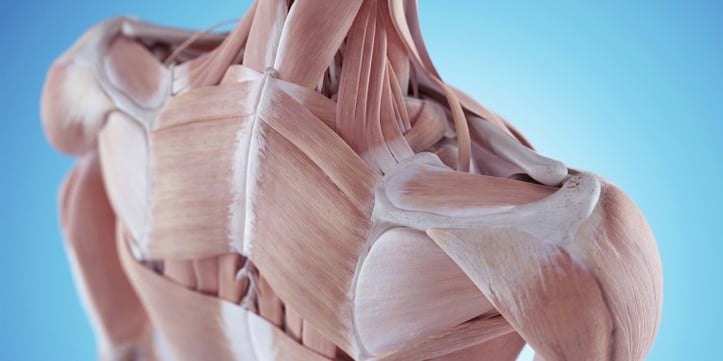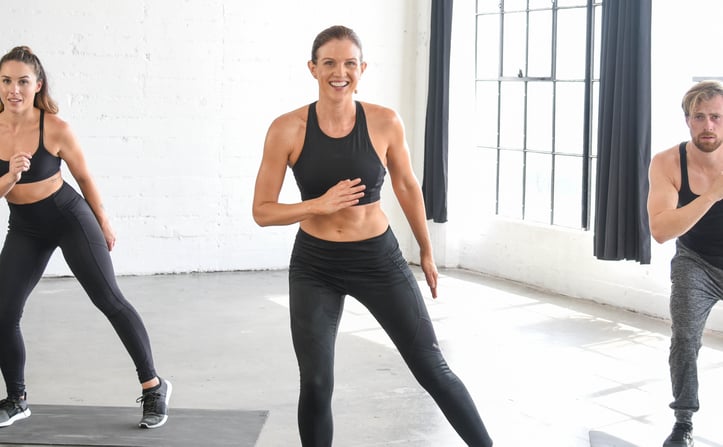
How Much Physical Activity is Enough for a Healthy Week?
In today's sedentary world, the importance of physical activity cannot be overstated. But a common question among many people, especially those new to an active lifestyle, is: how much physical activity is enough? Let's delve into the recommendations and understand what it means for a healthy week.
General Recommendations
The World Health Organization (WHO) and many other health authorities recommend that adults aged 18 - 64 years should do at least 150 minutes of moderate - intensity aerobic physical activity throughout the week. This can be broken down into 30 minutes a day for 5 days a week. But what exactly is moderate - intensity aerobic activity?
Moderate - Intensity Aerobic Activity
Moderate - intensity aerobic activities are those that get your heart rate up and make you breathe faster, but you can still carry on a conversation. Examples include brisk walking, cycling at a moderate pace (less than 16 mph), swimming, and dancing. If you're not used to exercising, starting with brisk walking is a great option. You can gradually increase your speed as your fitness level improves.
The reason behind this 150 - minute recommendation is based on numerous studies that have shown the positive impacts on health. Regular moderate - intensity aerobic activity can reduce the risk of heart disease, stroke, type 2 diabetes, and some cancers. It also helps with weight management, improves mental health, and boosts overall well - being.
Vigorous - Intensity Aerobic Activity
For those who are more fit or looking for a greater challenge, vigorous - intensity aerobic activity is also beneficial. The recommendation for vigorous - intensity aerobic activity is at least 75 minutes per week. Vigorous - intensity activities make you breathe hard and fast, and it's difficult to talk in more than short phrases. Examples include running, cycling at a fast pace (more than 16 mph), and high - intensity interval training (HIIT).
HIIT has gained popularity in recent years due to its time - efficiency. A typical HIIT session might involve short bursts of intense exercise, such as sprinting for 30 seconds, followed by a brief rest period, like walking for 60 seconds, repeated for a total of 20 - 30 minutes. This type of exercise not only provides a great cardiovascular workout but also has been shown to increase metabolism and improve insulin sensitivity.
Strength Training
In addition to aerobic activity, it's important to include strength training exercises in your weekly routine. The WHO recommends that adults should do strength - training exercises at least twice a week. These exercises should target all the major muscle groups, including the legs, hips, back, abdomen, chest, shoulders, and arms.
Strength training has many benefits. It helps build muscle mass, which in turn increases metabolism, allowing you to burn more calories even at rest. It also improves bone density, which is crucial for preventing osteoporosis, especially as we age. Examples of strength - training exercises include weightlifting, bodyweight exercises like push - ups, sit - ups, and squats, and using resistance bands.
If you're new to strength training, start with lighter weights or just your body weight and focus on proper form. As you get stronger, you can gradually increase the weight or the difficulty of the exercises. For example, if you're doing squats, you can start by doing them without any weights and then add dumbbells or a barbell as you progress.
Activity for Different Age Groups
Children and Adolescents
For children and adolescents aged 5 - 17 years, the recommendations are different. They should do at least 60 minutes of moderate - to - vigorous - intensity physical activity every day. This can include a variety of activities such as playing sports, cycling, running around in the playground, and participating in physical education classes at school. Physical activity during childhood and adolescence is important for healthy growth and development, including building strong bones and muscles, improving cardiovascular health, and promoting mental well - being.
Older Adults
Older adults (65 years and above) should also be physically active. The recommendation is for at least 150 minutes of moderate - intensity aerobic activity per week, similar to younger adults. However, they may need to modify the type and intensity of the activities based on their health conditions. For example, water aerobics can be a great option for older adults as it is gentle on the joints. Strength training is also important for older adults to maintain muscle mass and bone density, but they should start with very light weights and gradually increase as their strength improves.
Tips for Meeting the Recommendations
- Set Realistic Goals: If you're new to exercise, don't try to do too much too soon. Start with a small amount of activity, like 10 - 15 minutes a day, and gradually increase the duration and intensity over time.
- Find Activities You Enjoy: If you like what you're doing, you're more likely to stick with it. Whether it's dancing, hiking, or playing a sport, find an activity that you look forward to doing.
- Make it a Habit: Schedule your physical activity into your daily or weekly routine, just like you would a work meeting or a doctor's appointment. This will help you make it a regular part of your life.
- Mix it Up: Don't just do one type of exercise. Incorporate a variety of activities, including aerobic and strength - training exercises, to get a well - rounded workout.
- Stay Consistent: Consistency is key when it comes to reaping the benefits of physical activity. Even on days when you don't feel like it, try to do a little bit of exercise. Every little bit counts.
In conclusion, the amount of physical activity needed for a healthy week depends on your age and fitness level. By following the general recommendations of at least 150 minutes of moderate - intensity aerobic activity, including strength training twice a week, and making physical activity a regular part of your life, you can improve your health and well - being. So, start today and make this week a healthy and active one! And remember to listen to your body and adjust the intensity and duration of your activities as needed.

Fit vs Fat: Decoding Health's True Ruler

Pump Up Your Heart: Science-Driven Weight Loss

Wellness Technology: Your Path to Sustainable Weight Loss

A Sensible Guide to Dietary New Year's Resolutions

Prevent Shoulder and Rotator Cuff Injuries with Corrective Exercises

Overcome Fitness Plateaus: 4 Tips for Success

10 x 10 Thanksgiving Day Circuit: A Fitness Guide

Unleash Your Fitness Potential with Kit Rich's Training Secrets

The Future of Fitness: A Guide for Beginners to Intermediates

